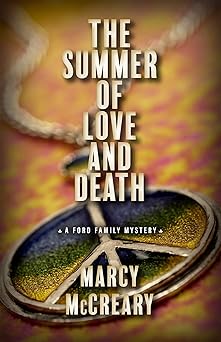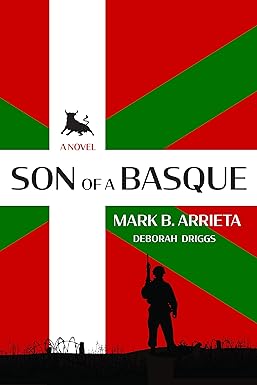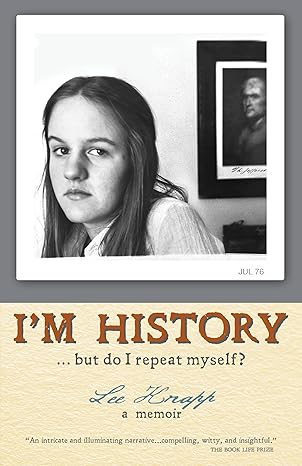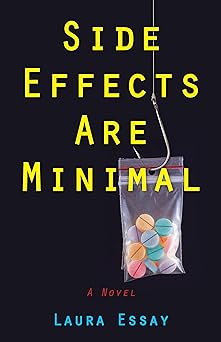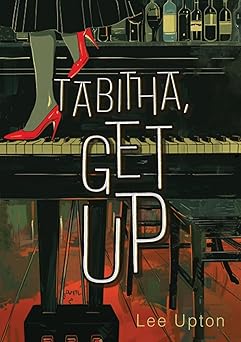How Did the Bread of Dreams Come To Be?
by Dorette Snover
In my upcoming companion cookbook, The Bread of Dreams, I have an alluring stuffing for Roman duck, a wonderful savory dish which uses rye berries. But before rye berries there was Laramie, Wyoming and Trolls, and Black Rye Bread.
The story of this recipe traces the season of rye from flour back to berries. It began with my Swedish friend, Helena. We both lived in married student housing in Laramie, Wyoming in the late 70’s.
We met because our husbands enjoyed hunting – and we enjoyed cooking. Then we both ended up working at Ivinson Memorial Hospital in the kitchen.
The light was fantastic in June in Wyoming and the evenings, long.
It was summer and our husbands were off on the Burlington Northern Railroad, working.
Helena did quite a bit of the baking in the Ivinson Memorial kitchen, and in 1979-1980 everything was still baked in house! I am so thrilled, still amazed at the notion that there was so much activity. I wish I could share a picture into the life of this hospital kitchen as it was. Helena and her crew made dream bars, rolls, and breads! I loved sneaking to the back of the kitchen, and bringing her a cup of coffee.
My work as the main evening cook often brought me into the dietician’s office for careful scrutiny. Thankfully it only lasted for an hour or so while she was still on her feet and patrolling the kitchen. If you’ve ever seen the movie Trolls, you might be familiar with the Chef character. This character depiction suits the dietician to a T. I love watching Trolls with my grandaughter, Izzy. And yet at that time there was no Trolls movie, only Helena’s and my imagination as we hooted and laughed ourselves silly over the Dietician’s antics when we got back to married student housing.
Working in that hospital kitchen was a world of fun and yet all sorts of mayhem and drama ensued with the dietician over recipes, and whether I had followed them. Or not. I’d like to make clear that this disagreement was only over the seasonings or cooking methods for dishes on the regular diet menu. I never changed anything regarding the special diets; like the low sodium and low fat diets. Still, I don’t think that a bit of oregano could hurt the tomato sauces that dressed the spaghetti for either of those diets either.
But I digress, back to bread and in particular, black rye bread.
One day when we both had time off Helena brought over her Swedish limpa recipe to our little apartment and I dug out Nana’s recipe for german rye bread.
With the kitchen door open to the backyard of the student housing development, we stared out at “prairie dog town.” We made the dough, and let it rise, it took all day and as we waited, we told each other stories of family and bread.
Helena’s bright red hair and demeanor were exuberant and charming companions in both kitchens; at home, and at the hospital where I worked with her.
The resulting loaf is excellent company to light spring soups of peas and swiss chard, as well as salads of new potatoes, scallions and grilled knackwurst.
I hope you enjoyed this little story about Black Rye Bread and the connections that drew me to write about The Psomi Mistresses in Tales of the Mistresses and the follow-up companion cookbook, The Bread of Dreams.
Black Rye Bread with Orange and Caraway
3/4 cup rye flour
5-6 cups whole wheat flour
1-2 cups unbleached bread flour
3 T active dry yeast
1/2 cup lukewarm water
1 T molasses
1 1/2 cups lukewarm strong coffee
2 tablespoons dutch-process cocoa
2 tablespoons softened unsalted butter
1/2 cup molasses
1 teaspoon salt
1/2 cup cold mashed potatoes
zest of 1 orange
1-2 teaspoons crushed caraway seeds
1 egg, beaten with a bit of water for egg wash
Begin by mixing the yeast with 1/2 cup lukewarm water and 1 tablespoon of molasses.
In another bowl mix the rye and the whole wheat flour, and salt.
In another mix the coffee, cocoa, butter, molasses, mashed potatoes, orange and caraway seeds together. It should be on the thinner side.
Gradually combine the two mixtures, by adding the dry into the wet. Knead the resulting stiff dough with your hands until it feels elastic and springy and contains air bubbles, maybe about 10 minutes.
Sprinkle the dough with the bread flour and leave it for 4 hours in
a warm, but not too warm, place. It should rise slowly until it’s doubled in bulk.
Divide the dough in two, and shape them into rounds.
Place on a greased baking sheet sprinkled with cornmeal.
Cover with a towel and let the loaves rise again until doubled.
Preheat the oven to 400 degrees.
Glaze the tops of the loaves with the egg wash.
Bake for 10 minutes, then reduce the heat to 350, and bake for
another 25 minutes.
Tap the bottom of the loaf, if it sounds hollow, the bread is done. You can also check the internal temp of the loaf. It should be between 180 and 200 degrees fahrenheit.
It may be trying to do so, but leave cool completely if you can. Then slice and butter. Serve. Leftovers are even better when toasted and served with muenster cheese and gherkins.
—
About the Author. Dorette Snover is a writer who loves planting tomatoes, making sourdough bread, and walking down paths lined with fig trees. She’s been a doughnut maker, hospital dietary assistant, food-styler of fried chicken, fraternity cook, goat-cheese apprentice, an NPR contributor, and media escort to cookbook authors. She lives in Chapel Hill, NC and founded C’est si Bon! Cooking School with her family.
Find out more about Dorrete on her website https://www.dorettesnover.com/
THE BREAD OF DREAMS
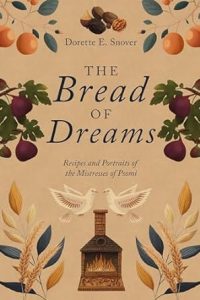 In the novel, Tales of the Mistress, each Mistress of Psomi tells a tale. Epi, the bread apprentice listens to each one, sometimes with his hands over his ears. Sometimes, his eyes roll in disbelief.
In the novel, Tales of the Mistress, each Mistress of Psomi tells a tale. Epi, the bread apprentice listens to each one, sometimes with his hands over his ears. Sometimes, his eyes roll in disbelief.
For their complex world is fed with lusty and rustic elements like a rich dish of duck stuffed with cracked rye in a Roman style long forgotten. A bread that traces its beginnings back to Greece, just as the Mistresses Antaia, Margot and Auvillar do. Greece is a place where chickpeas were, and sometimes still are, fermented to give rise to a fluffy bread, served with a sweet and salty salad composed of rustic and pilfered ingredients. Get to know the chestnut flour focaccia that melds new world tomatoes with thyme, and embeds them on old world wood-fired slabs of bread. And another dish where field doves are stuffed with the seeds they’ve just gorged on, then they are roasted, and served on a bed of vermicelli noodles, in an Arabic Medfouna style. Walking along the port of Massalia, modern day Marseille, Epi found grilled octopus – just before she got trapped on a Guild ship, looking for Antaia, who she hoped to find on the island of Trinacria.
Buy The Bread of Dreams Cookbook today and create the sensual and ancient pleasures of Elysium, Greece – made even more delicious, in your kitchen, tonight. Who knows, maybe you can join the Mistresses for their next adventure. Coming soon!
BUY HERE
Category: Contemporary Women Writers, On Writing





